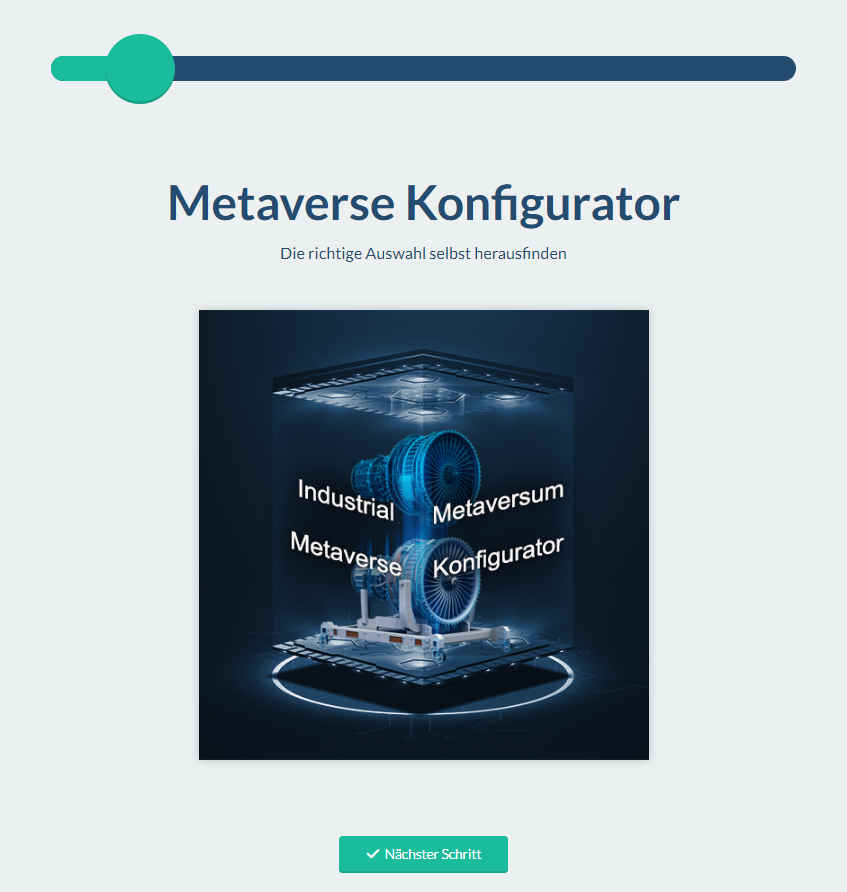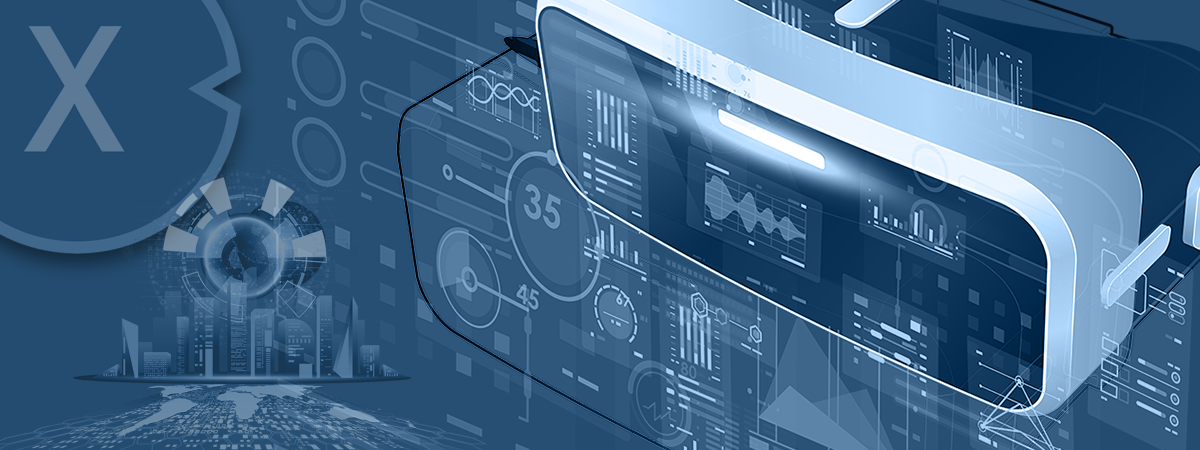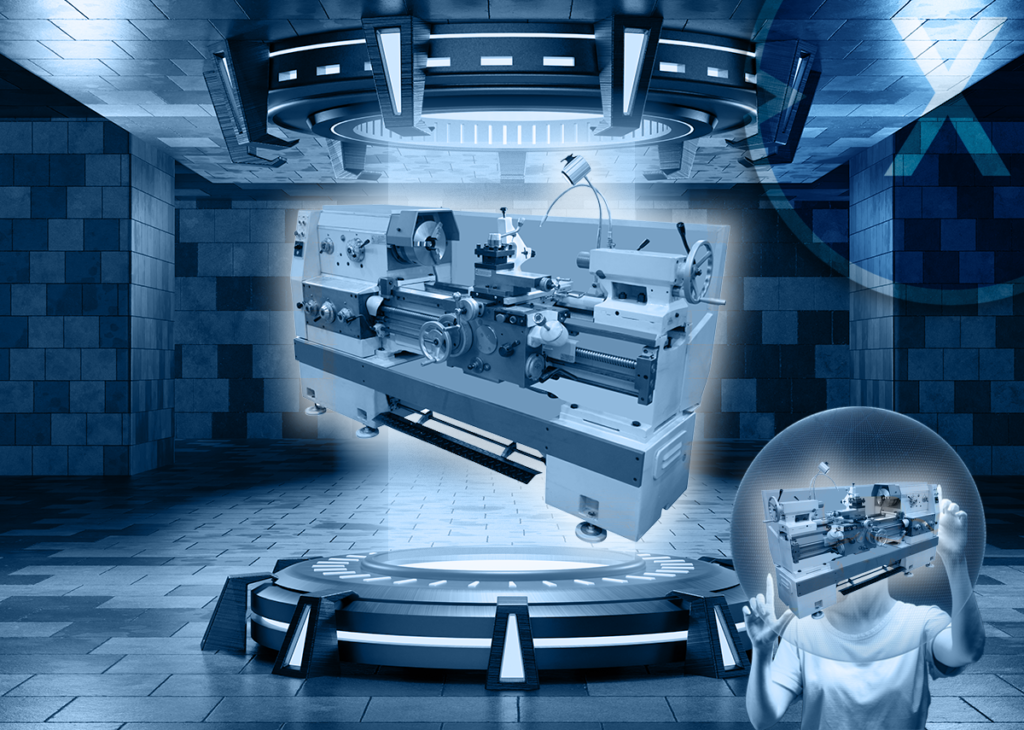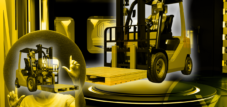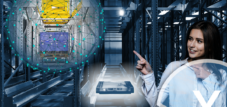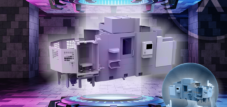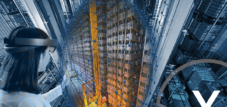Top ten: CNC milling center and CNC milling-turning center of manufacturers and companies - marketing and advice
Language selection 📢
Published on: June 24, 2023 / update from: June 24, 2023 - Author: Konrad Wolfenstein
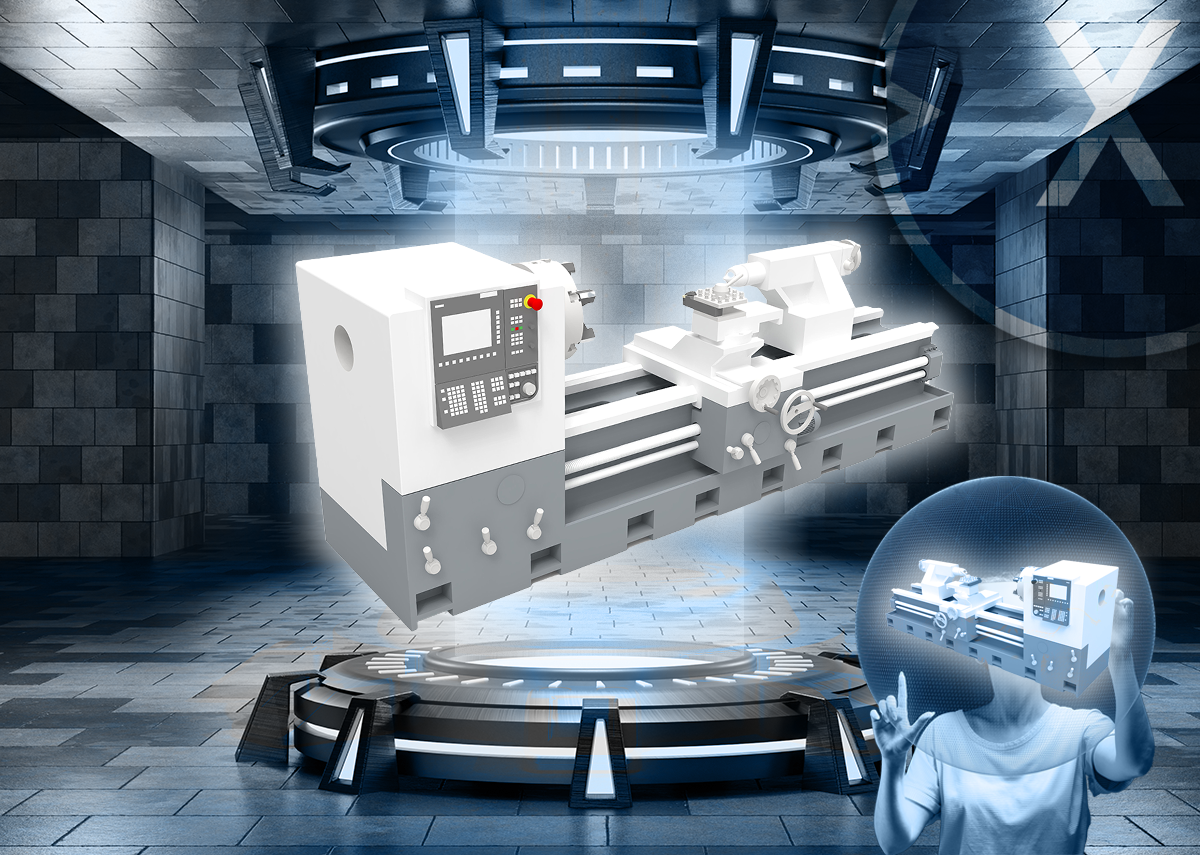
Advice for manufacturers and companies of CNC milling centers, CNC milling-turning centers and other CNC processing machines - Image: Xpert.Digital
The CNC milling center and CNC milling-turning center are fundamentally important in mechanical engineering
CNC milling centers and CNC milling turning centers are of great importance in the modern manufacturing industry as they offer high precision, efficiency and flexibility in machining workpieces.
precision
CNC milling centers and CNC milling-turning centers enable exceptionally precise machining of workpieces. By using computer-controlled systems, complex 3D models and geometric shapes can be created with high accuracy. This is particularly important in industries such as aerospace, medical technology and automotive, where tight tolerances and precise components are required.
Efficiency
The automated nature of CNC milling centers and CNC mill-turn centers allows for high productivity and efficiency. Thanks to program-controlled processing, large quantities can be produced in less time and with less work. This results in improved lead time and an increase in overall productivity.
versatility
CNC milling centers and CNC milling turning centers offer a wide range of machining options. You can process various materials such as metals, plastics, wood and composites. In addition, they enable a variety of machining operations such as milling, drilling, tapping, turning and more. This versatility allows manufacturers and companies to produce a wide range of workpieces and components and to optimize their production processes.
Automation and repeatability
CNC milling centers and CNC milling turning centers offer a high level of automation, which minimizes human errors and ensures high repeatability of machining results. The programs can be saved and reused at any time to ensure consistent quality of the parts produced.
➡️ The main difference between CNC milling centers and CNC milling-turning centers lies in their functionality. CNC milling centers specialize in milling and can perform complex 2D and 3D machining. They use rotating milling tools to remove materials and create precise shapes and surfaces. On the other hand, CNC milling turning centers combine the functions of milling and turning in a single machine. This enables the machining of workpieces that require both milling and turning operations, resulting in more efficient manufacturing and a reduction in the number of machines.
➡️ CNC milling centers and CNC mill turning centers play an essential role in the modern manufacturing industry by providing precision, efficiency and flexibility, enabling manufacturers to produce high quality and complex workpieces.
Our Industrial Metaverse configurator
Just try out our universally applicable (B2B/Business/Industrial) Metaverse configurator for all CAD / 3D demo options:
Xpert (B2B/Business/Industrial) Metaverse configurator for all CAD / 3D data can be used on all devices, one platform!
Suitable for:
Increase market opportunities for CNC milling centers and CNC milling turning centers
A digital twin of a CNC milling center or CNC milling center in a B2B Business Metaverse offers numerous advantages for the marketing and business development of companies. The term “metaverse” refers to a virtual world that is inhabited by computer -generated environments and avatars. Here are some important and interesting details on how a digital twin of a CNC milling center or CNC milling center center can support marketing and business development and increase and expand market opportunities:
Visualization and demonstration
By creating a digital twin of a CNC milling center or CNC mill-turn center, the company can showcase its machines and their capabilities in a virtual environment. Potential customers have the opportunity to interactively explore the milling center or mill-turn center and visualize the various functions and machining processes. This creates a better understanding of the performance of the machines and allows potential customers to better understand the benefits of the technology.
Virtual training and workshops
A digital twin enables companies to offer virtual training and workshops in which customers and interested parties can learn how to operate and program the CNC milling center or CNC milling-turning center. This offers a cost-effective and time-efficient alternative to physical on-site training. Through interactive tutorials and simulations, customers can improve their skills and fully exploit the potential of the machines.
Customer loyalty and brand presence
A digital twin in a B2B business metaverse offers the opportunity to build strong customer loyalty and strengthen brand presence. Customers can interact with the virtual machine, ask questions and provide feedback. In this way, the company can establish direct contact with customers and build a closer relationship. It also enables global reach as potential customers from different parts of the world can visit the digital twin without being physically present.
Market analysis and adaptability
By integrating analytics data into the digital twin, companies can collect important information about machine usage and performance. This enables detailed market analysis and better adaptability to customer needs. The company can identify trends and changes in demand and adapt its product strategy accordingly to remain competitive and explore new market opportunities.
Collaboration and cooperation
In a B2B business metaverse, companies can work and cooperate with other players in the industry. Through the digital twin of a CNC milling center or CNC milling-turning center, you can work together on projects, exchange ideas and drive innovation. This promotes collaboration and creates new business opportunities for everyone involved.
➡️ A digital twin of a CNC milling center or CNC mill-turning center in a B2B business metaverse an innovative and immersive way to support marketing and business development. Through visualization, training opportunities, customer loyalty, market analysis and the promotion of collaboration, it opens up new ways to increase and expand market opportunities. Companies can present their products and services more effectively and differentiate themselves from the competition by taking advantage of the advantages of the virtual world.
Related here:
Milling center and milling-turning center: The development and opportunities for manufacturers and companies
Milling centers and mill-turn centers have undergone remarkable development in recent decades and today offer manufacturers and companies numerous opportunities in the modern manufacturing industry. These advanced machines have revolutionized the way components and workpieces are manufactured, opening up new possibilities for efficiency, precision and flexibility.
The development of milling centers and milling-turning centers goes back to the introduction of CNC (Computer Numerical Control) technology. These computer-controlled machines make it possible to carry out complex machining operations in the shortest possible time and with high accuracy. Through the use of precise linear drives, powerful spindles and advanced control systems, milling centers and mill-turn centers can now machine a wide range of materials, including metals, plastics, composites and even ceramics.
One of the most important opportunities that milling centers and mill-turn centers offer is the optimization of production processes. With their ability to precisely machine complex shapes and profiles, these machines enable the production of high-quality components with tight tolerances. This leads to improved quality of the final products and reduces the need for post-processing. In addition, milling centers and mill-turn centers enable a high level of automation, which leads to a reduction in manual work and an increase in productivity.
Another advantage of milling centers and milling-turning centers is their flexibility. Using state-of-the-art tool changing systems, these machines can quickly switch between different machining tasks and perform a variety of operations such as milling, drilling, tapping, reaming and turning. This allows manufacturers and companies to produce various workpieces and components on a single machine and minimize production time and machine effort.
With advancing digitalization and the emergence of Industry 4.0, milling centers and mill-turn centers also open up new possibilities for integration into networked production environments. By connecting to intelligent control systems and connecting to other manufacturing machines, these machines can be integrated into a seamless and efficient production line. This enables real-time monitoring, data analysis and optimization of manufacturing processes, resulting in further increases in productivity and quality.
In addition, milling centers and milling-turning centers offer manufacturers and companies the opportunity to develop new business areas. By combining CNC technology with advanced CAD/CAM systems, complex and customized components can be produced. This opens up opportunities in various industries such as aerospace, medical technology, automotive and energy technology, to name a few. Manufacturers can focus on niche markets and offer tailored solutions to specific customer needs.
➡️ Milling centers and milling-turning centers offer a wide range of development opportunities for manufacturers and companies. Thanks to their high precision, efficiency and flexibility, these machines enable production processes to be optimized, open up new business areas and contribute to increasing competitiveness. With technological progress and the constant development of milling centers and mill-turn centers, we can certainly expect even more innovative applications and opportunities in the future.
General opportunities for mechanical engineering
Mechanical engineering is an industry characterized by constant technological advances and innovations. In recent years, digital twins have emerged as a promising way to expand the possibilities of mechanical engineering. A wide range of opportunities are opening up for mechanical engineering, particularly in the area of the B2B business metaverse and advanced XR technologies (extended reality) such as mixed reality, augmented reality and virtual reality.
A digital twin is a virtual representation of a physical object, process or system. In mechanical engineering, digital twins can be used for various purposes. For example, they enable detailed simulation and analysis of machine behavior before they are physically built. This reduces development times and costs because possible errors and problems can be identified and corrected at an early stage.
The combination of digital twins with XR technologies opens up completely new possibilities in mechanical engineering. Extended Reality allows users to immerse themselves in a virtual environment and interact with virtual objects. Mixed reality inserts digital elements into the real world, while augmented reality overlays digital information on top of the physical environment. Virtual Reality, on the other hand, offers a completely immersive virtual environment.
By using XR technologies, machine builders can create virtual showrooms where customers can see the machines in action without being physically present. Using 2D matrix codes, customers can easily interact with the digital twins and get detailed information about the machines. This enables realistic and interactive product presentation that helps customers make informed decisions.
In addition, digital twins and XR technologies can also be used for education and training purposes. Employees can complete virtual training to learn how to use new machines or practice complex maintenance and repair procedures. This helps improve efficiency, safety and productivity.
Another important aspect is the networking of digital twins in the B2B business metaverse. By integrating digital twins into a virtual platform, machine builders and customers can interact and communicate in a digital environment. This enables efficient collaboration, regardless of geographical distances. Manufacturers can better understand customer requirements and develop customized solutions.
However, it is important to note that the introduction and implementation of digital twins and XR technologies in mechanical engineering also presents challenges. This includes creating high-quality virtual models, integrating data from various sources, ensuring data security and data protection, and training employees to use the new technologies.
➡️ Digital twins and XR technologies such as extended, mixed, augmented and virtual reality, in combination with 2D matrix codes and virtual showrooms, offer many exciting possibilities for mechanical engineering. They enable efficient product development, interactive customer communication, realistic training and improved collaboration. Mechanical engineering can benefit from these technologies to offer competitive solutions and drive efficiency and innovation in the industry.
Top ten manufacturers of CNC milling center and CNC milling-turning center machines
This list of the top ten CNC milling centers and CNC mill-turning centers manufacturers is based on their reputation, market presence and the quality of their machines. It is important to note that there are many other reputable manufacturers that also produce high-quality CNC milling centers and CNC mill-turn centers.
DMG Mori Seiki Co., Ltd.
DMG Mori is one of the world's leading manufacturers of CNC milling centers and CNC milling-turning centers. They offer a wide range of high quality machines for various applications and industries.
Haas Automation, Inc.
Haas Automation is known for its reliable and affordable CNC milling centers and CNC mill-turn centers. They offer a variety of models to suit different needs, both for small workshops and large industrial companies.
Yamazaki Mazak Corporation
Yamazaki Mazak is a leading Japanese manufacturer of CNC milling centers and CNC mill-turn centers. They are known for their advanced technology, quality and precision. Their machines are used in various industries worldwide.
Hurco Companies, Inc.
Hurco is a global company that designs and manufactures CNC milling centers and CNC mill-turn centers with advanced control technology. Their machines are known for their ease of use, precision and reliability.
Makino Milling Machine Co., Ltd.
Makino specializes in the production of high-precision CNC milling centers and CNC mill-turn centers for metal processing. They are characterized by their advanced technology, high accuracy and performance.
FANUC Corporation
FANUC is a world-leading manufacturer of CNC controls and CNC milling centers and CNC milling-turning centers. They offer a wide range of machines for various applications, from small to large workpieces.
Okuma Corporation
Okuma is a Japanese manufacturer of CNC milling centers and CNC milling turning centers with a long tradition in the industry. Their machines are characterized by high precision, stability and reliability.
Chiron Works GmbH & Co. KG
Chiron is a German manufacturer of CNC milling centers and CNC mill-turn centers known for its high-precision and efficient solutions. They offer machines for various applications including high-speed milling and multi-axis machining.
Mazak Corporation
Mazak is a world-renowned manufacturer of CNC milling centers and CNC milling turning centers with a wide range of products. They are known for their high quality, advanced technology and reliability.
Hermle AG
Hermle is a German manufacturer of CNC milling centers and CNC milling-turning centers known for its precise and high-quality machines. They offer a wide range of products ranging from small to large workpieces.
CNC bed milling machine
A CNC bed milling machine is a powerful and versatile machine in the field of milling. It is characterized by its robust construction, which consists of a stable machine bed that supports the workpieces and ensures precise processing. The CNC control enables automated and program-controlled processing, allowing complex milling processes to be carried out efficiently and precisely.
The CNC bed milling machine is used in various industries, including automotive, aerospace, tool and mold making, and general mechanical engineering. With their help, various materials such as metals, plastics, wood and composite materials can be processed precisely and efficiently.
One of the outstanding features of a CNC bed milling machine is its ability to perform both simple and complex milling operations. Thanks to the program-controlled movements of the milling spindle and the workpiece, complex shapes, threads, grooves and other milling operations can be produced with high precision and repeatability. This enables the production of high-quality workpieces with tight tolerances.
The CNC control of a bed milling machine offers a wide range of functions and possibilities. Using specialized software, the operator can create and edit programs to perform desired milling operations. The CNC control also allows monitoring the machining process in real time to detect and correct possible errors or irregularities.
Another advantage of a CNC bed milling machine is its flexibility. It can be equipped with various tools and clamping systems to carry out a wide range of machining operations. Tool changers allow different milling tools to be exchanged automatically, increasing productivity and efficiency.
The accuracy and repeatability of the CNC bed milling machine are crucial factors in its performance. Modern machines have advanced measurement techniques and control systems to ensure high precision. Through the combination of high-quality components, a robust construction and a precise CNC control, tight tolerances can be maintained.
Operating a CNC bed milling machine requires specific knowledge and skills. The operator must be able to program and operate the CNC control, set up tools and monitor the machining process. Extensive training and experience are required to utilize the machine to its full potential and achieve high quality results.
➡️ In conclusion, CNC bed milling machines play an indispensable role in the modern manufacturing industry. With their ability to carry out complex milling operations precisely and efficiently, they contribute to the production of high-quality workpieces. Through automation and programming, they enable high productivity and repeatability. The continued development of CNC technology is expected to result in even more powerful and advanced bed milling machines to meet the needs of the industry.
CNC portal milling machine
A CNC gantry milling machine is a powerful and versatile machine tool used in the field of CNC milling. It is characterized by its robust construction and its ability to process large workpieces precisely. These machines offer a number of advantages and are used in various industries such as mechanical engineering, automotive, aviation and furniture manufacturing.
One of the outstanding properties of a CNC portal milling machine is its high stability and rigidity. The construction consists of a stable portal frame that is connected to the work surface via a strong base. This solid construction ensures vibration-free machining, even during demanding milling operations and when using heavy tools.
The CNC control allows precise positioning of the tool spindle and control of milling movements in all three axes: X, Y and Z. This allows complex milling operations to be carried out to produce 2D and 3D contours, pockets, holes and threads. The CNC control also offers the ability to program various tool changes and automated tool paths, resulting in efficient and productive machining.
A CNC gantry milling machine also offers a large work surface, which makes it possible to machine workpieces of different sizes and shapes. With the gantry structure and the mobility of the milling head, the machine can process workpieces from different sides, increasing flexibility and versatility.
Another advantage of a CNC gantry milling machine is the ability to process various materials. It can precisely mill metals such as aluminum, steel and stainless steel as well as plastics, composite materials and wood. This makes the machine attractive for various applications, from prototype production to series production to custom-made products.
The CNC gantry milling machine can also be equipped with additional features and options to meet the specific requirements and needs of the user. This can include the integration of a tool changer, chip extraction, an automatic clamping system or a 4th or 5th axis. These extensions enable even more extensive processing and increase the efficiency of the machine.
When it comes to programming and operation, modern CNC gantry milling machines offer user-friendly software solutions. With the help of CAD/CAM software, workpieces can be designed, machined and converted into CNC programs virtually. The control software enables intuitive operation of the machine and offers functions such as preview, collision control and monitoring of the machining processes.
However, purchasing a CNC gantry milling machine requires an investment in terms of cost and space requirements. These machines are typically larger and more expensive than traditional milling machines. It is therefore important to carefully assess the specific requirements and application area to ensure that the machine meets the needs of the company.
➡️ A CNC gantry milling machine is a powerful machine tool that offers high precision, versatility and efficiency. With its robust design, CNC control and large work surface, it is able to handle complex milling tasks in various industries and produce high-quality workpieces.
CNC milling-turning-grinding center
A CNC milling-turning-grinding center is a state-of-the-art and versatile machine that is widely used in the metalworking industry. This advanced machining unit combines the functions of milling, turning and grinding in a single machine, enabling efficient and precise production of workpieces.
The CNC milling-turning-grinding center offers a wide range of processing options for various materials such as metals, plastics, ceramics and composites. It is able to machine complex shapes, holes, threads, contours and surfaces with high precision. This enables the production of high-quality workpieces for various industries such as aerospace, automotive, medical technology and general mechanical engineering.
The machine has a CNC control (Computerized Numerical Control), which allows the machining operations to be precisely programmed and controlled. Using CAD/CAM software, detailed 3D models and machining programs can be created to produce the desired workpieces. This increases the accuracy, efficiency and repeatability of the machining processes.
A key advantage of the CNC milling-turning-grinding center is its multifunctionality. By combining the machining processes milling, turning and grinding in one machine, setup times are reduced and productivity is increased. The machine can automatically switch between the different processing steps, resulting in efficient and continuous production.
The precise machining of the workpieces is guaranteed by high-quality tools and spindles. The CNC milling-turning-grinding center is equipped with powerful and robust spindles that enable high speeds and feeds. This enables rapid material removal and efficient processing. The tools can also be changed automatically to perform various machining operations without manual intervention.
Another interesting function of the CNC milling-turning-grinding center is the possibility of integrating measurement technology. The machine can be equipped with non-contact measuring technology such as tactile or optical measuring systems. This enables in-process measurement of the workpieces to monitor and ensure dimensional accuracy and surface quality. This allows quality controls to be carried out during production and possible deviations to be identified at an early stage.
Operating the CNC milling-turning-grinding center requires specific specialist knowledge and training. The operators must program, control and monitor the
Master the machine. Additionally, careful setup and tool selection is crucial to achieve optimal results.
➡️ A CNC milling-turning-grinding center provides an efficient and flexible solution for complex machining tasks. It combines the advantages of milling, turning and grinding in a single machine, resulting in reduced machining time, improved precision and increased productivity. With its versatile application possibilities, the CNC milling-turning-grinding center is an indispensable tool in the modern metal processing industry.
CNC engraving machine
A CNC engraving machine is a powerful tool specifically designed for precise and detailed engraving of materials. These machines are widely used in various industries including jewelry making, signage, advertising, metal processing and many others.
The CNC engraving machine works based on computer-controlled instructions that allow it to engrave complex patterns, symbols, text or even images on various surfaces. These include metals such as aluminum, stainless steel, brass and copper, but also wood, plastics and stone. Engraving can be done at different depths, allowing precise control over the design of the engraving.
The CNC engraving machine works with a rotating spindle equipped with an engraving tool. This tool can have different shapes and sizes depending on the requirements of the specific engraving task. The machine moves the workpiece precisely along the axes and guides the engraving tool according to the predetermined instructions of the computer program.
Using a CNC engraving machine offers a variety of benefits. Firstly, it enables high accuracy and repeatability of engraving. Because the machine is computer controlled, complex patterns and fine details can be created with exceptional precision. This ensures a consistently high quality of engraving, regardless of the quantity of products to be produced.
Another advantage of the CNC engraving machine is the efficiency and speed of engraving. Compared to manual engraving by a craftsman, CNC technology enables significantly faster processing. The machine can work automatically and complete the engraving tasks with high speed and precision, resulting in significant time saving.
In addition, the CNC engraving machine offers flexibility and versatility. The computer program allows different designs and engraving patterns to be changed quickly and easily. This allows manufacturers and companies to respond to customer requests and offer individual engraving. The machine can also be integrated with other CNC machines or software solutions to ensure a seamless workflow.
➡️ It is important to note that proper operator training and knowledge is of great importance in order to utilize the full capabilities of a CNC engraving machine. The operator must master the design program and machine functions to achieve the best results and avoid potential errors. Regular maintenance and care of the machine are also required to ensure optimal performance
The superiority of the Business Metaverse in product presentation compared to catalogs, brochures and leaflets
A business metaverse offers numerous advantages, especially with regard to 3D visualization and product presentation. It enables an immersive presentation of products with all technical details and offers a variety of interaction options. Compared to conventional brochures, catalogs or leaflets, the Metaverse offers a concentrated wealth of information that does not overwhelm potential interested parties.
The milling machines and lathes listed above with all the informative details can be presented attractively and clearly in a business metaverse that can be viewed on all devices with displays. Be it via PC, laptop, smartphones, tablets, VR and AR glasses as well as touch tables !
- CNC milling and lathes: New Metaverse advice for manufacturers and companies – Image: Xpert.Digital
- CNC milling machines and CNS lathes from manufacturers and companies for the Metaverse - Image: Xpert.Digital
3D visualization allows products to be presented in a realistic environment. Customers can view the products from different angles, zoom, rotate and see them in action. All technical details and features are clearly presented, allowing potential buyers to develop a deep understanding of the product.
In addition, the business metaverse offers opportunities for interaction. For example, customers can select product variants, make configurations or try out different options. This creates an interactive experience and allows customers to customize the product to their individual needs.
Another advantage of the Business Metaverse is the possibility of virtual collaboration. Companies can showcase their products in virtual showrooms and invite customers from all over the world to participate. Using extended, augmented, virtual and mixed reality technologies, hybrid trade shows, trade shows and events can be held virtually, providing a cost-effective and flexible alternative to physical events.
The Business Metaverse is an innovative solution to effectively present products and reach potential customers. It offers an interactive and immersive experience that can surpass traditional marketing materials. By leveraging the metaverse, companies can increase productivity, improve quality, and explore new business opportunities.
The full potential of the Business Metaverse at a glance
➡️ The full potential of the business metaverse at a glance with virtual showrooms, extended, augmented, virtual and mixed reality for hybrid trade fairs, trade fairs and events in general.
The Metaverse offers a wide range of possibilities for showrooms, trade fairs and events by integrating Extended Reality (XR), Augmented Reality (AR), Virtual Reality (VR) and Mixed Reality (MR).
Here are some examples of how these technologies can be used in hybrid trade fairs, trade fairs and events:
Virtual trade fair stands
Companies can create virtual exhibition stands that offer visitors an immersive and interactive experience. Through VR or AR glasses, visitors can explore the exhibition stand, view products, watch presentations and communicate with exhibitors in real time.
Virtual product presentations
Companies can hold virtual product presentations where products are displayed in 3D. Visitors can view the products from different angles, use interactive functions and receive detailed information.
Virtual conferences and lectures
By integrating VR and AR, conferences and lectures can be held virtually. Attendees can visit virtual auditoriums, listen to speakers, watch presentations and even ask questions.
Virtual networking events
Virtual networking platforms in the Metaverse allow participants to network with other visitors, exhibitors and industry experts. Through avatars, they can move around virtual spaces, have conversations and explore business opportunities.
Virtual training and workshops
Companies can offer virtual training and workshops where participants can learn interactively in VR or AR environments. This enables realistic and practice-oriented training without spatial restrictions.
Virtual product tests and demos
Using VR or AR applications, visitors can test and try out products virtually. This provides an immersive experience and allows companies to showcase features and benefits of their products in an engaging way.
Virtual trade fair tours
Visitors can take virtual tours of the trade fair and visit various exhibitors, access product information and participate in virtual interactions. This enables a flexible and convenient trade fair experience from any location.
Virtual showrooms
Companies can create virtual showrooms to showcase their products and services. These showrooms can contain realistic 3D models, animations and interactive elements. Users can visit these showrooms via the Internet and virtually explore the products, get information and even make purchases.
Augmented Reality (AR)
AR technology can be used in physical showrooms and trade shows to provide an enhanced experience. Visitors can use their mobile devices to overlay additional information, 3D models or virtual elements into the real environment. This allows products to be presented interactively and further details to be conveyed.
Virtual trade fairs and conferences
Virtual trade fairs and conferences allow participants to participate from anywhere in the world without having to be physically present. You can experience lectures, presentations, discussions and networking events in virtual environments. Attendees can create avatars, interact with others, and participate in interactive booths.
Mixed Reality (MR)
MR combines elements of virtual and augmented reality and enables an immersive experience. In a mixed reality environment, exhibitors can present their products and services in a realistic 3D environment while interacting with physical elements. For example, participants can view and interact with virtual products on a real table.
Hybrid trade fairs
Hybrid trade fairs are a combination of physical and virtual events. Companies can organize both on-site and online exhibitions to achieve a wider reach. Virtual participants can access virtual exhibition stands, participate in presentations and interact with exhibitors via the Internet. This makes the event accessible to a larger target group.
➡️ These technologies in the Metaverse offer numerous advantages for companies and participants in trade fairs and events. They enable an interactive, immersive and flexible experience that includes both physical and virtual elements. This opens up new opportunities for product presentation, networking and collaboration in the business world.
➡️ The combination of XR technologies in the Metaverse opens up completely new dimensions for hybrid trade fairs, trade fairs and events. It enables a fascinating and immersive experience that goes beyond the boundaries of traditional events.
Extended Reality (XR) allows visitors to take part in events virtually, regardless of their location. You can move around in a virtual environment and interact with other participants. Real and virtual elements are merged together to create a unique experience.
Augmented Reality (AR) allows participants to superimpose digital content into the real world. For example, product information, animations or virtual models can appear directly in front of visitors. This opens up completely new possibilities for product presentation and explanation.
Virtual Reality (VR), on the other hand, places participants completely in a virtual environment. For example, you can move around a virtual showroom, view products and even test them virtually. VR creates an immersive experience that allows visitors to experience products in a completely new way.
Mixed Reality (MR) seamlessly combines real and virtual elements. This means, for example, that real trade fair stands can be expanded to include digital content. For example, visitors can see digital information on a real product or use interactive elements to learn more about a product.
Using XR technologies in the Metaverse offers numerous benefits for companies and visitors. It enables global reach as participants can join an event from anywhere in the world. Companies can also save costs by eliminating the need for physical locations while still providing an immersive experience.
For visitors, the Metaverse opens up new opportunities to discover, explore and experience products. You can interact with products and other participants, attend virtual demos and presentations, and even take part in virtual training or workshops.
The combination of XR technologies in the Metaverse promises an exciting future for hybrid trade fairs, trade fairs and events. It enables companies to expand their reach, provide visitors with an immersive experience and open up new business opportunities. It's an innovative and exciting development that fundamentally changes the way we experience events.
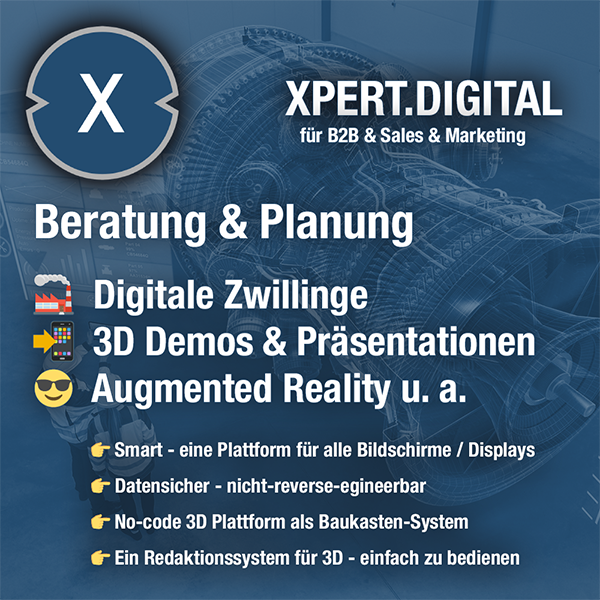
Xpert.plus -industry expert, here with its own 'xpert.digital industrial hub' in the field of mechanical engineering of over 1,000 specialist contributions
I would be happy to serve as your personal advisor.
You can contact me by filling out the contact form below or simply call me on +49 89 89 674 804 (Munich) .
I'm looking forward to our joint project.
Xpert.Digital – Konrad Wolfenstein
Xpert.Digital is a hub for industry with a focus on digitalization, mechanical engineering, logistics/intralogistics and photovoltaics.
With our 360° business development solution, we support well-known companies from new business to after sales.
Market intelligence, smarketing, marketing automation, content development, PR, mail campaigns, personalized social media and lead nurturing are part of our digital tools.
You can find out more at: www.xpert.digital – www.xpert.solar – www.xpert.plus



